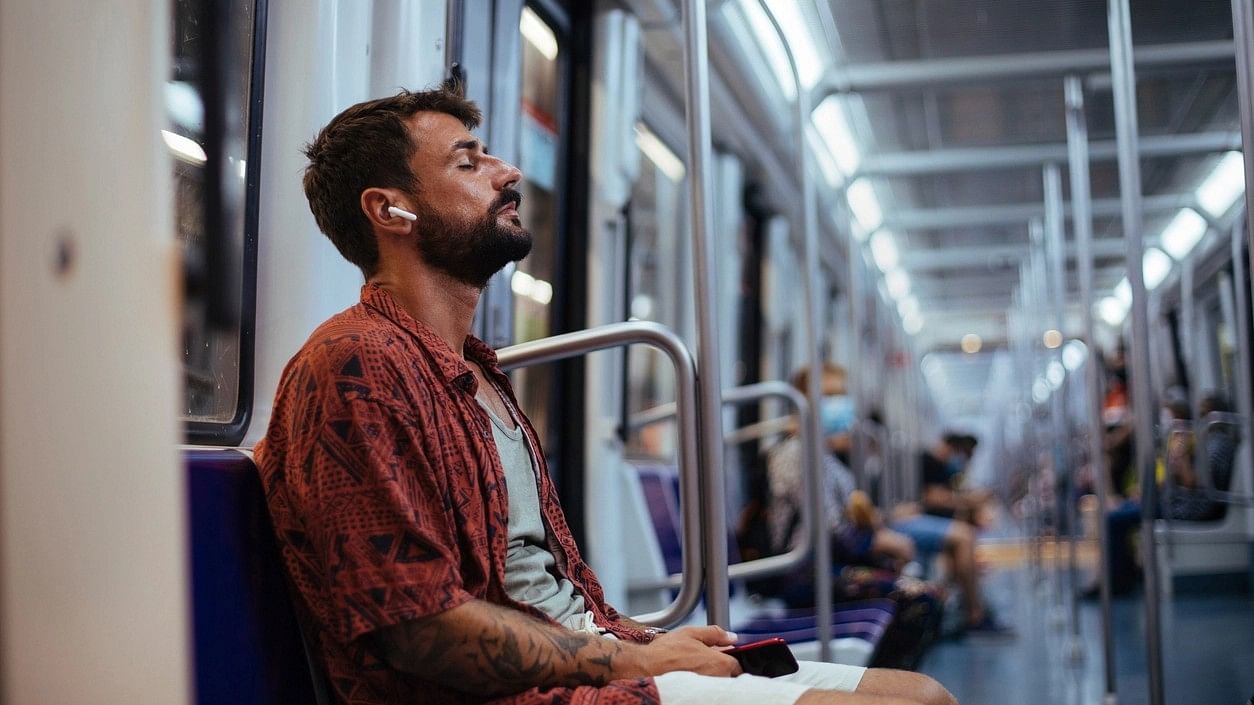
Music is what music does. Online or offline.
istock Photo
Carnatic musician T M Krishna has recently held forth on the perils, as he sees it, of music lovers inexorably leaning towards consuming the art form through a plethora of streaming OTT channels, and eschewing live performances. Sitting comfortably at home, one can order entertainment, à la carte, often through state-of-the-art sound systems. Not to mention the all-pervasive mobile phone. ‘Spoilt for choice’ is an oft-repeated phrase. Krishna’s gripe is that increasingly, music lovers are becoming disinclined to attend live concerts, thereby denying themselves the opportunity to experience, along with others in the auditorium, the immediacy and thrill that a live performance promises. And, with caveats, delivers.
What Krishna posits is inarguable in theory. The facts on the ground may or may not bear this out. Since I have chosen to cite a Carnatic musician’s views, let me stick to the cloistered world of Carnatic music to take this discussion forward. Our world has come a long way over the decades, and there have been fundamental sociological and lifestyle changes. I am not an anthropologist, but that pretty much sums it up. I am keeping the Covid pandemic out of this purview, though it might have been a contributory factor in accelerating the process of keeping people out of concert halls. However, Covid was a black swan event and the scourge’s relevance to current behavioural patterns is virtually nil. Covid distorts the narrative.
YouTube and other digital platforms were not available back in the day, but radio was a hugely popular medium. All-India Radio’s weekly national programmes and morning offerings of Carnatic music were avidly anticipated. The tallest musicians gave of their time generously to these programmes, which only whetted the appetite of listeners to flock to concert halls to listen live to their favourite musicians. Vinyl records, cassette and spool tapes would circulate freely amongst friends and relatives who would wear them out listening to these masterpieces endlessly. If you were a Carnatic music aficionado back then, there was not much else happening to divert your attention.
Fast forward to the past couple of decades. If you look beyond the pandemic aberration, there are two factors that make attending concerts not quite the experience it once was. Just getting from one place to another has become arduous and a deterrent. In many metros, concert venues are located far apart and only those who live in the vicinity make the effort. Then there’s the parking woes, traffic navigation and the anxiety
to return home. The exception is a city like Chennai, where many venues exist within shouting-distance of each other. This is particularly evident during the December music festival, when people move from venue
to venue like those great historical migrations.
Krishna does make the point that a handful of musicians who enjoy box-office appeal, are the exceptions to the rule. I am not sure that this is a recent phenomenon. Even in the 60s and 70s, the venerable Music Academy Madras would find itself hard pressed to fill the hall for all but a few stars. It is possible that there were more stars then than there are now, though that is debatable. From about the early 80s till the mid-90s, there was a palpable lull in concert attendance, barring a few bankable artists. Thence, till well into the millennium years, there was a huge upsurge of interest, with a
host of young musicians breaking through the clutter. Concert halls were bursting at the seams.
This flies in the face of any sweeping generalisation that people are not inclined to attend live concerts. Quality finds its own level and rises to the top, like cream. Music lovers have become more selective and will attend concerts of artists they consider worth their while. The stresses and strains of modern life cannot be overemphasised. Then there is that hoary old chestnut, “Are youngsters interested in Carnatic music?” The question rhetorically suggests that they are not, but the conclusion is facile and fallacious. Sell-out concerts witness the presence of a more-than-respectable number of teenagers and those in their 20s and 30s whooping it up in their Ed Sheeran tee-shirts. ‘Awesome Kalyani, boss’ they WhatsApp to one another in the auditorium.
Of course, it is not anyone’s case that home-viewing is a better form of experiencing music than a live performance, but needs must. Krishna opines that, among other things, the virtual world is “a dangerous manifestation of reality, because it excludes person-to-person interaction. It is an intoxicating drug.” That is a matter of opinion, but the virtual world is here to stay. Just as Krishna himself has self-avowedly admitted to being an integral part of that world, warts and all. An intoxicating drug? Many users are mainlining on it.
(The writer is an
advertising professional
and blogger)